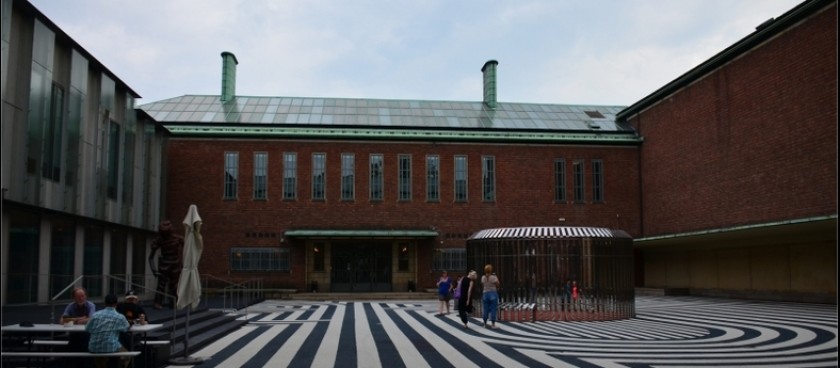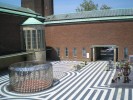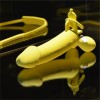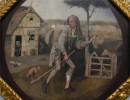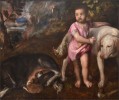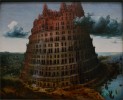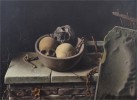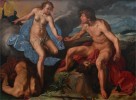- #NL10
- Museumpark 18, 3015 CX Rotterdam, Netherlands
- +31104419400
- museum@farina.org
- https://www.boijmans.nl/
- 51.9142079, 4.4733300 Copy to clipboard Copy
-
#Family time , #Museums
The museum itself was founded only at the beginning of the 19th century and opened its doors to visitors in 1935. Later, the museum exposition was supplemented by the collection of another art lover - entrepreneur Beuningen. It is these two collections that make up the main core of the museum's exposition. Today, the gallery contains various pieces of art, from the early Middle Ages to our time.
Among all the Dutch collections of fine art, the Boijmans van Beuningen Museum (this is how these two surnames are written in the original, not separated by any signs) occupies a special place, thanks to the haphazard selection, based primarily on the personal tastes of two people who played a leading role in creating the collection - Frans Jakob Otto Boijmans and Daniel Georg van Beuningen.
According to a beautiful fairy tale, at first, Boijmans bequeathed his collection to the city from the bounty of his soul, and after a hundred years the collection was "replenished" with paintings from the collection of van Beuningen. In general, the altruists made a gift to their descendants. Everything was a little more human.
Why Boijmans, who lives and works as a judge in Utrecht, suddenly decided to leave his paintings to Rotterdam? More a misanthrope than a philanthropist, France was horrified to imagine how his lovely paintings, in which he invested almost all his (earned by honest bribes) savings, would be seized by relatives after his death. And from these thoughts every time France found himself on the verge of giving his relatives this pleasure. Rumours about a collector beating in the epileptic began to creep around the neighbourhood, and "merchants" reached out to our justice with offers. Realizing that selling paintings is not a way out of the situation (in this case, he will give money to greedy relatives), Boymans found an elegant solution: at the same time to spit into eternity and vile relatives. Negotiations with interested representatives of various authorities and businessmen did not last very long, and after the burgomaster of Rotterdam made the most concrete proposal - the museum will be located in the building of the Dam Administration especially given for this purpose and will bear the name of Boymans - the will was drawn up, signed and solemnly announced. Soon, the paintings from the boxes of the freshly deceased moved to Rotterdam, and on June 3, 1849, the city authorities inaugurated the Boymans Museum, breaking a ritual bottle of gin on the doorstep of the building and drinking the remaining 127 inside.
Little by little, the museum acquired new paintings but did so rarely and reluctantly. Oddly enough, the first impetus for the development of the museum was given ... by a fire. When in 1864 Boymans burned down, having lost a significant part of the exhibits (including the recently acquired "Family Portrait" of Fabritius), the money received under the insurance was enough to buy a good bundle of "Flemings". The replenishment of the collection was so pleased that the current director of the museum began to regularly run around private collectors and other art lovers with an outstretched paw and eyes of a basset. The museum began to swell, but the Dam Administration premises did not provide for the management of all the dams in the world and therefore was of limited size. In 1935, the municipal council, using public money, built a new building for the museum, austere in appearance and crowned with an observation tower. For the completeness of the forms, the museum lacked a second name. We didn’t have to wait long. Since 1916, an industrialist by the name of van Beuningen has been closely interested in the affairs of the museum. He donated some paintings from his collection, helped with money when buying new paintings. Not to say that all this was done disinterestedly. Daniel Georg was himself an avid collector and amassed such a collection of paintings that he could compete with the museum. But this was not part of the task. Close cooperation with the museum helped van Beuningen to buy new paintings for himself, provided him, as they say, today, a competitive edge, and in addition, sharply raised the status of an industrialist in the art world. Do you think that "replenished" is another will? I would have your faith in humanity. Dan didn't even think about donating his paintings to the museum. He died quietly, contemplating his wealth on the walls. But for relatives, this daub (van Eyck, van Gogh, Bruegel, Titian, etc.) somehow did not make life much easier. Now happy heirs have begun to negotiate with the authorities. In 1958, the municipality decided to buy the main part of van Beuningen's collection (136 paintings) and give the museum a middle name.Well, you can go inside.
The museum begins with a temporary exhibition, where young and cheerful Dutch people usually frolic. And what laughter is to the Dutch, death to the Russian. They are not enough of any exhibits, so they also have installations of various types there: you go into a small room in the middle of the circle. Stand on this circle, and your penises fly under your feet. Don't show this to your kids! Otherwise, a child may think that a flying penis is normal. So even this is not enough for them! There is also a workshop in which you can make penises of such sizes and colours that you only dreamed of.
How to get to the Boimans van Beuningen museum
Walking walk from the central station will take 15 minutes.
From the central station you can take trams: No. 7 (in the direction of Willemsplein) to the Museumpark stop, No. 4 (in the direction of Marconiplein) to the Eendrachtsplein stop.
By metro: to the Eendrachtsplein stop (lines A, B, C).
